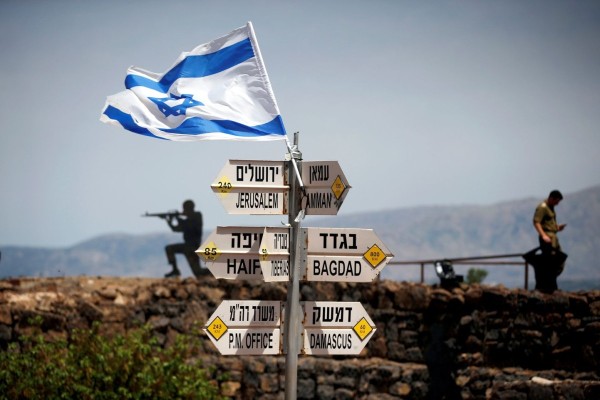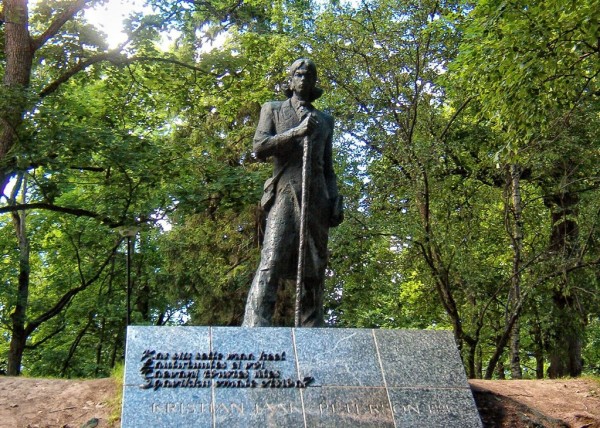I have been in the UK where one of my stops was the little village of Cucklington where friends have a smallholding. Farmer readers may be interested to know that they have 1.4 acres of land and work a traditional small scheme concentrating on quality rather than quantity. They have two beehives with 40,000 bees in each, one cockerel (a White Sussex) and 24 hens including Road Rocks, Windy Blues and a Leghorn crossbreed, five (pedigree) Shetland sheep and three Kune Kune pigs. Once the pigs have been relegated to the freezer my friends will revert to breeding Oxford Saddlebacks (also known as “Plum puddings”) their preferred breed. Add to this a feral cat to control rodents in the food shed, a wide variety of vegetables and a large dung heap and the picture is complete.
Cucklington was, in the 8th century AD, a district of the Anglo Saxon County of Somerset. A hundred was a division of land used in England, Wales, Scandinavia (including Estonia) and north Germany. It’s a härad in Swedish, a Harde in German and a kihelkond in Estonian. Toivo Raun, (in Estonia and the Estonians) tells us that kihelkond is “clearly a Scandinavian loan perhaps originally referring to an area that paid tribute to Viking invaders.” The Christians kept the ancient arrangements after the 13th century conquest and kihelkond came to mean a parish in a county (maakond). Cucklington is Anglo Saxon for “the settlement of Cucol's people” –in other words, it was named after the local boss. The ancient Estonians did the same. Henry of Livonia (born around 1180), chronicler of the Northern Crusades, mentions (several times) the village of Lembitu, named after one of the most influential chiefs of Sakala.
The original inhabitants of Somerset were not Germanic but Britons who spoke a Celtic language and had a Romanised, Christian culture. What happened here was a sort of Crusade in reverse. During 400-800 AD various Briton chieftains ruled from regional hill forts (c.f. Varbola or Ötepää) but when the pagan Anglo Saxons first arrived around 400AD, they (like the Estonians) had no central authority and retreated in disarray before the Saxons. This retreat was halted at battles near the modern city of Bath around 500 and the reason for this is the appearance of the mysterious leader known as Arthur …
The west of England is particularly rich in Arthurian legend. Tintagel in Cornwall is said to be Arthur’s birthplace, Cadbury hill fort (Somerset) could be Camelot (his court) and Glastonbury (also in Somerset) the Isle of Avalon where the national hero (Rex quondam, rexque futurus – The once and future king) sleeps until his country needs him. Our Kalevipoeg, similarly, has a grave in Tallinn, beds in Alatskivi and Torma, had his legs chopped off at Kääpa and guards hell until Estonia needs him …
Scholars agree that the Arthurian legends have some truth in them but this is hard to get at because the Arthurian era took place in the “dark ages” when not much was written down. I like the theory that Arthur is short for Arthursus, a compound of the Celtic Briton (now Welsh) and Latin names for “bear” – arth and ursus –the symbolic name of Owain Ddantgwyn, ruler of Powys, a territory that once covered Wales and central England. One thing is certain. After the death of Arthur the Britons were driven westward into Wales. Little of the Celtic Briton language remains in modern English despite being spoken by the overwhelming majority of the population at the time of the Saxon invasion. Fewer than 30 words (including the name of the river Thames) were assimilated by the newcomers. To add insult to injury the invaders called the natives “Wealas,” meaning slave or foreigner and the Britons (like the Estonian Undeutsche after the Northern Crusades) became both in their own country. The Britons fled to modern Wales (the name comes from “Wealas”), Cornwall and Brittany (France). The Celtic name for a Welsh person is Cymraeg - the Kümri of my Saagpaak dictionary. England, meanwhile, was named for the Germanic Angles from Angeln, in Shleswig Holstein, Germany.
Folklorist August Annist (1899 – 1972) thought that (like “Arthur”) Kalev-derived names were once a special title given to people that later turned into actual names. Kalev, Kalevine, Kalevine poisikene were once pet names for a bridegroom. Kalevipoeg appears in old Russian tales as “Kolovan.” Kolovan was also, according to a map of 1154 made by the Arabian geographer El Idrisi for King Roger of Sicily, the name of a settlement at modern Tallinn. We shall never know the truth about our heroes, of course, unless someone digs up some bones with Arthur’s or Kalev’s dog tag or finds the “ancient book” mentioned by both Kreutzwald or Thomas Malory (author of the 1485 Le Morte d'Arthur, The death of Arthur) stuffed behind a stone. But does it really matter? At the end of the day, our heroes and heroines are important for their values and qualities rather than their chronology.
Alfred the Great (849-899AD) was certainly real. He was a Saxon Christian king of Wessex (in the west of England) who repelled Viking invaders. Alfred was also a scholar and translated (into Anglo Saxon) the stories of the trader Wulfstan who travelled from Hedeby, (north Gemany) to Truso (in north Poland) around 880AD. Among the peoples he encounters are “Estonians.” According to Wulfstan “there are many towns and in each one a king. There is lots of honey and fish. No ale is brewed but the Estonians have mead in profusion that is drunk by the poor and slaves. The king and rich men drink mare’s milk. There is a great deal of war among the different tribes.” Wulfstan describes funeral rites where a corpse of a rich man can lie unburied for six months (made possible by the production of “artificial cold” in summer or winter) during which time there is much drinking and sporting. On the day of the cremation the man’s (surviving) property is divided into heaps and there is a horse race to see who can grab the most from the heaps. Maybe this custom should be revived …
Have a good summer!
Appeared first in Estonian in Maaleht in June
Bird Droppings from Estonia: Arthur and Alfred
Arvamus
TRENDING


























